Study on Mechanism of Static Blasting-Induced Hard Rock Fracture Expansion
Abstract
:1. Introduction
2. Principles and Mechanisms of Hard Rock Fracturing Using Static Blasting Technology
2.1. Mechanical Examination of Static Breakers’ Shattering of Hard Rocks
2.1.1. Individual-Hole Cracking
- 1
- Microfracture stage [36]
- 2
- Cleavage development stages [36]
- 3
- Breakage stage
2.1.2. Double-Hole Cracking
2.1.3. Surface Cracking in Multiple Directions
2.2. Analysis of the Static Crusher’s Hard Rock Fracturing Mechanism
3. Experiments on the Fracturing and Expansion Capabilities of Static Crusher
3.1. Expansion Pressure Test
3.1.1. Expansion Pressure Test Methods and Equipment
- (1)
- The resistance-strain approach
- (2)
- Expansion pressure test equipment
3.1.2. Expansion Pressure Test Groups and Programs
- (1)
- Expansion pressure test group
- (2)
- Program for expansion pressure tests
- ①
- Before attaching the strain gauges, the surface of the steel pipe should be polished using sandpaper.
- ②
- Apply adhesive to secure the strain gauges in their designated positions on the steel pipe. Connect the strain gauges to the resistance strain tester, then connect the strain gauge to the computer and set the parameters to prepare for data monitoring.
- ③
- Weigh the medicinal roll and an appropriate amount of bulk material. Immerse the rolls in water for 2.5 min, then promptly inject them into the solid steel pipes H1, H2, H3, and H4.
- ④
- Activate the device to commence measuring and recording the strain of the steel pipe. Wait until the reaction has subsided and there are no discernible changes in the monitoring data before removing the steel pipe and analyzing the collected information.
3.1.3. Expansion Pressure Test Result Analysis
3.2. Single-Hole Specimen Cracking Test
3.2.1. Single-Hole Specimen Fabrication and Mechanical Parameters
- (1)
- Specimen mixing ratio
- (2)
- Production of single-hole specimens
- (a)
- Weigh the cement and sand and dry mix them according to the prescribed ratios.
- (b)
- Add water to the mixture following the prescribed water dosage ratio and thoroughly combine for 10 min.
- (c)
- Fill the square and cylindrical molds with the mortar mixture until they are filled.
- (d)
- Place a glue stick in the center of the designated hole in the square mortar, securing it in place.
- (e)
- Once the mortar has been partially set, remove the molds, take out the glue stick, and store the specimen in a box with consistent humidity and temperature for 28 days.
- (f)
- Create standard mechanical specimens from the columnar specimens.
- (3)
- Measurement of specimen mechanical parameters
3.2.2. Cracking Effect and Analysis of Single-Hole Specimens
4. Numerical Simulation Analysis of Static Blasting Fracturing Influencing Factors
4.1. Software Calculation Principles and Modeling
4.1.1. Software Calculation Principles
- (1)
- Calculation principle
- (2)
- Intrinsic modeling
- (3)
- Servo mechanism
4.1.2. Modeling and Verification
- (1)
- Model size and boundary conditions
- (2)
- Calibration and model parameter validation
4.1.3. Simulated Experimental Program
4.2. Simulation Analysis of Cracking of Double-Hole Specimens with Different Influencing Factors
4.2.1. Influence of Pore Size on Specimen Cracking
- (1)
- Influence of pore size on crack expansion and rupture state of specimens
- (2)
- The change rule of expansion pressure and the size of fracturing expansion pressure under different hole diameters
4.2.2. Influence of Hole Spacing on Specimen Cracking
- (1)
- Influence of hole spacing on crack expansion and rupture state of specimens
- (2)
- The change rule of expansion pressure under different hole spacing and the size of fracturing expansion pressure
4.2.3. Influence of Circumferential Pressure on Specimen Cracking
- (1)
- Influence of circumferential pressure on crack expansion and rupture state of specimens
- (2)
- The change rule of expansion pressure and the size of fracturing expansion pressure under different peripheral pressures
5. Discussion
6. Conclusions
- (1)
- From the perspective of hydration reaction, the study revealed the expansion mechanism and generation of expansion pressure by the fracturing agent. It also examined the mechanical aspects of fracturing hard rock caused by expansion pressure. The results showed a positive correlation between expansion pressure and aperture size. Additionally, the study provided a detailed description of the fracturing processes, including the micro-cracking stage, fissure development stage, and fracture stage in RSAC.
- (2)
- Using PFC2D software, a numerical model of dual-porosity specimens was established to simulate the expansion fracturing under confining pressure. The simulation revealed internal dynamic effects, microscopic particle motion laws, macroscopic fracture morphology, and crack propagation characteristics during the fracturing process. The study clarified the release of simulated expansion pressure resulting from changes in cracks within the dual-porosity specimens. Furthermore, it determined the magnitude of expansion pressure during complete penetration and rupture of specimens under different conditions.
- (3)
- The study analyzed the development trends of expansion fracturing in dual-porosity specimens considering various aperture sizes, spacing, and confining pressures. The findings indicated a positive correlation between aperture size and fracturing effect, while spacing and confining pressure exhibited a negative correlation. Moreover, the study revealed a negative correlation between aperture size and the magnitude of expansion pressure, while spacing and confining pressure presented a positive correlation.
Author Contributions
Funding
Institutional Review Board Statement
Informed Consent Statement
Data Availability Statement
Conflicts of Interest
References
- Yuan, L.; Zhang, N.; Kan, J.; Wang, Y. The concept, model, and reserve forecast of green coal resources in China. J. China Univ. Min. Technol. 2018, 47, 1–8. [Google Scholar]
- Yao, G.; Gao, Z.; Li, X. Evaluation of coal resources bearing capacity in China. China Min. Mag. 2020, 29, 1–7. [Google Scholar]
- Lin, B. Strategic Consideration of New Energy Development in China. J. China Univ. Geosci. (Soc. Sci. Ed.) 2018, 18, 76–83. [Google Scholar]
- Chen, S.; Feng, F.; Wang, Y.; Li, D.Y.; Huang, W.P.; Zhao, X.D.; Jiang, N. Tunnel failure in hard rock with multiple weak planes due to excavation unloading of in-situ stress. J. Cent. South Univ. 2020, 27, 2864–2882. [Google Scholar] [CrossRef]
- Yang, J.; Zheng, K.; Wang, Z.; Pang, N. Technology of weakening and danger-breaking dynamic disasters by hard roof. J. China Coal Soc. 2020, 45, 3371–3379. [Google Scholar]
- Li, T.; Zhang, H.; Zhang, Z.; Jia, X.; Sun, G. Deep hole pre-splitting blasting technology when a fully mechanized coal mining face passes through a high drop fault. J. China Coal Soc. 2019, 44, 199–209. [Google Scholar]
- Zhang, A.; Yao, G. Static Blasting Construction Technology. Build. Technol. Dev. 2002, 29, 3. [Google Scholar]
- You, B. Static Blasting Technology-Silent Breaking Agent and Its Application; China Building Materials Press: Beijing, China, 2008; pp. 1–4. [Google Scholar]
- Huang, H. Application and Research of Static Broken Used in High-Gas Coal Mine Roadway End Caving Roof Control. Ph.D. Thesis, Taiyuan University of Technology, Taiyuan, China, 2014. [Google Scholar]
- Liu, J.; Zhang, L.; Wei, Y.; Wu, Z. Coupling Model of Stress–Damage–Seepage and Its Application to Static Blasting Technology in Coal Mine. ACS Omega 2021, 6, 34920–34930. [Google Scholar] [CrossRef]
- Cui, X.; Zhang, J.; Guo, L.; Gong, X. The Effect of Static Blasting Materials on Coal Structure Changes and Methane Adsorption Characteristics. Adv. Mater. Sci. Eng. 2020, 2020, 2858621. [Google Scholar] [CrossRef]
- Jin, Z.; Liao, H.; Zhu, W.; Ma, C.; Liu, Z. Splitting Mechanism of Rock and Concrete Under Expansive Pressure. Chin. J. Rock Mech. Eng. 1989, 1989, 19–26. [Google Scholar]
- Zhou, Y.; Shi, S.; Zhang, Y.; Cai, Q.; Liang, J.; Cheng, Y. Fracture and Cut-through Mechanism by Static Controlling Blasting for Rock Breaking. Blasting 2017, 34, 120–125+150. [Google Scholar]
- Wang, Y. Research on Mechanism and Technology of No-Explosive Demolition. Ph.D. Thesis, Wuhan University of Technology, Wuhan, China, 2009. [Google Scholar]
- Li, R. Static Fracturing Increasing Low Permeability Coal Seam Basic Experiment Research. Ph.D. Thesis, Taiyuan University of Technology, Taiyuan, China, 2017. [Google Scholar]
- Gao, Y. Study on Treatment of Hard Roof by Static Crushing Method in High Gassy Mine. Ph.D. Thesis, Taiyuan University of Technology, Taiyuan, China, 2019. [Google Scholar]
- Gong, Z.; Ma, Q. Experiment and Analysis of Slit PVC Tube Guiding Soundless Crack Concrete Block. J. Anhui Univ. Sci. Technol. Nat. Sci. 2018, 38, 48–52. [Google Scholar]
- Ren, J.; Xie, X.; Zhu, Y. Analysis of Crack Effect by Static Expanding and Cracking Based on Empirical Model of Outburst Coal. Coal Technol. 2015, 34, 153–155. [Google Scholar]
- Yang, D. Slow-Release Coal Uncovering in Cross-Cut New Technology by Expanding Agent. Saf. Coal Mines 2013, 44, 58–60. [Google Scholar]
- Wang, J. The Association Response Mechanism and Characteristics of Electromagnetic and Microseismic Signals during the Static Cracking Process of Coal or Rock. Ph.D. Thesis, China University of Mining & Technology, Beijing, China, 2015. [Google Scholar]
- Hao, B.Y.; Huang, H.; Feng, Z.J.; Wang, K. The Static Breaking Technique for Sustainable and Eco-Environmental Coal Mining. Sci. World J. 2014, 6, 248792. [Google Scholar]
- Laefer, D.F.; Ambrozevitch-Cooper, N.; Huynh, M.P.; Midgette, J.; Ceribasi, S.; Wortman, J. Expansive fracture agent behavior for concrete cracking. Mag. Concr. Res. 2010, 62, 443–452. [Google Scholar] [CrossRef]
- Tang, X.; Tang, C.; Tang, S.; Cui, Y.; Song, L. Physical experiment and numerical simulation on the effect of the soundless cracking agent. Chin. J. Geotech. Eng. 2005, 27, 437–441. [Google Scholar]
- Cheng, X. Study on the Static Expansion Cracking of the Hard Top Plate in the Fully Mechanized Face. Ph.D. Thesis, Xi’an University of Science and Technology, Xi’an, China, 2020. [Google Scholar]
- Guo, H.; Zhu, L. Research on the mechanism of energy release and permeability improvement in coal strata by static blasting. China Saf. Sci. J. 2020, 30, 60–65. [Google Scholar]
- Li, K. Under the Action of Static Cracking Agent Directional Rupture Plain Concrete Research. Ph.D. Thesis, Anhui University of Science and Technology, Huainan, China, 2016. [Google Scholar]
- Zhang, J.; Cui, X.; Zhou, F.; Wang, K.; Xu, S. Numerical Simulation on Crack Radius of Coal Seam Drilling by Static Blasting. Saf. Coal Mines 2017, 48, 146–149. [Google Scholar]
- Li, T.; Mou, W.; Yi, R.; Xiao, Q.; Hua, J. Evolution and extension of fissures in hard rocks under double-hole expansion fracturing. Saf. Coal Mines 2021, 52, 70–78. [Google Scholar]
- Sabzi, M.; Farzam, M. Hadfield manganese austenitic steel: A review of manufacturing processes and properties. Mater. Res. Express 2019, 6, 1065c2. [Google Scholar] [CrossRef]
- Sabzi, M.; Dezfuli, S.M. Post weld heat treatment of hypereutectoid Hadfield steel: Characterization and control of microstructure, phase equilibrium, mechanical properties and fracture mode of welding joint. J. Manuf. Process. 2018, 34, 313–328. [Google Scholar] [CrossRef]
- Gao, R.; Kuang, T.; Zhang, Y.; Zhang, W.; Quan, C. Controlling mine pressure by subjecting high-level hard rock strata to ground fracturing. Int. J. Coal Sci. Technol. 2021, 8, 1336–1350. [Google Scholar] [CrossRef]
- Chen, F.; Xiong, H.; Wang, X.; Yin, Z. Transmission effect of eroded particles in suffusion using the CFD-DEM coupling method. Acta Geotech. 2023, 18, 335–354. [Google Scholar] [CrossRef]
- Yan, G.; Zhang, F.; Ku, T.; Hao, Q.; Peng, J. Experimental Study and Mechanism Analysis on the Effects of Biaxial In-Situ Stress on Hard Rock Blasting. Rock Mech. Rock Eng. 2023, 56, 3709–3723. [Google Scholar] [CrossRef]
- Xiong, H.; Zhang, Z.M.; Yang, J.; Yin, Z.Y.; Chen, X.S. Role of inherent anisotropy in infiltration mechanism of suffusion with irregular granular skeletons. Comput. Geotech. 2023, 162, 105692. [Google Scholar] [CrossRef]
- Wu, S. Experimental Study on Cracked Coal Seam Hard Roof by Static Cracking Agents. Ph.D. Thesis, China University of Mining & Technology, Xuzhou, China, 2019. [Google Scholar]
- Sun, L. Study on the Static Cracking Agent and Its application. Ph.D. Thesis, Xi’an University of Architecture and Technology, Xi’an, China, 2005. [Google Scholar]
- Gui, L. Application research of the static cracking technique is used through faulting in synthesis exploitation. China Min. Mag. 2010, 19, 85–87. [Google Scholar]
- Li, R.S.; Zheng, W.Z.; Xu, L.B.; Wang, Y. Experimental study on radial expansion compressive stress of steel tube with static crushing agent. J. Harbin Inst. Technol. 2020, 52, 19–27. [Google Scholar]
- Zhai, C.; Wu, S.; Tang, Z.; Zhong, C.; Xu, J. Study on seam fracturing and permeability improved technology based on static blasting. Coal Sci. Technol. 2015, 43, 54–57+50. [Google Scholar]
- Cheng, P. Research Progress on PFC2D Simulation of Crack Propagation Characteristics of Cracked Rock. J. Eng. Geol. 2018, 26, 528–539. [Google Scholar]
- Li, Y.; Cai, W.B.; Li, X.J.; Zhu, W.S.; Zhang, Q.Y.; Wang, S.G. Experimental and DEM Analysis on Secondary Crack Types of Rock-Like Material Containing Multiple Flaws Under Uniaxial Compression. Appl. Sci. 2019, 9, 1749. [Google Scholar] [CrossRef]
- Jeong, S.W.; Kighuta, K.; Lee, D.E.; Park, S.S. Numerical Analysis of Shear and Particle Crushing Characteristics in Ring Shear System Using the PFC2D. Materials 2021, 14, 229. [Google Scholar] [CrossRef] [PubMed]
- Wang, P.; Yang, T.; Yu, Q.; Liu, H.; Zhang, P. On obtaining jointed rock slope geo-parameters and the application of PFC2D. J. Min. Saf. Eng. 2013, 30, 560–565. [Google Scholar]
- Liu, Q.S.; Liu, D.F.; Tian, Y.C.; Liu, X.Y. Numerical simulation of stress-strain behavior of cemented paste backfill in triaxial compression. Eng. Geol. 2017, 231, 165–175. [Google Scholar] [CrossRef]
- Shi, C.; Zhang, Q.; Wang, S. Numerical Simulation Techniques and Applications for Particle Flow (PFC5.0); China Building Materials Press: Beijing, China, 2018; pp. 176–186. [Google Scholar]
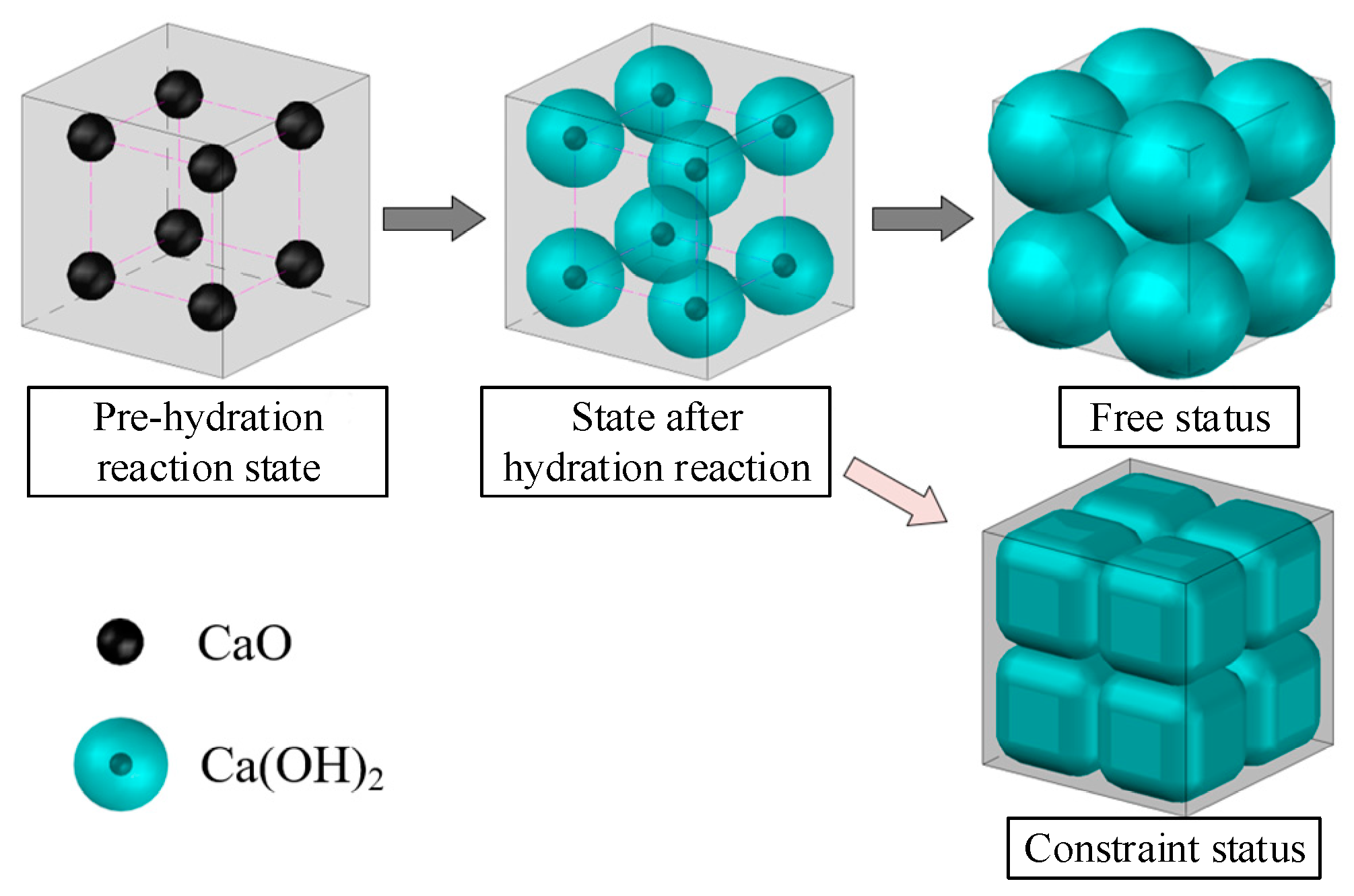

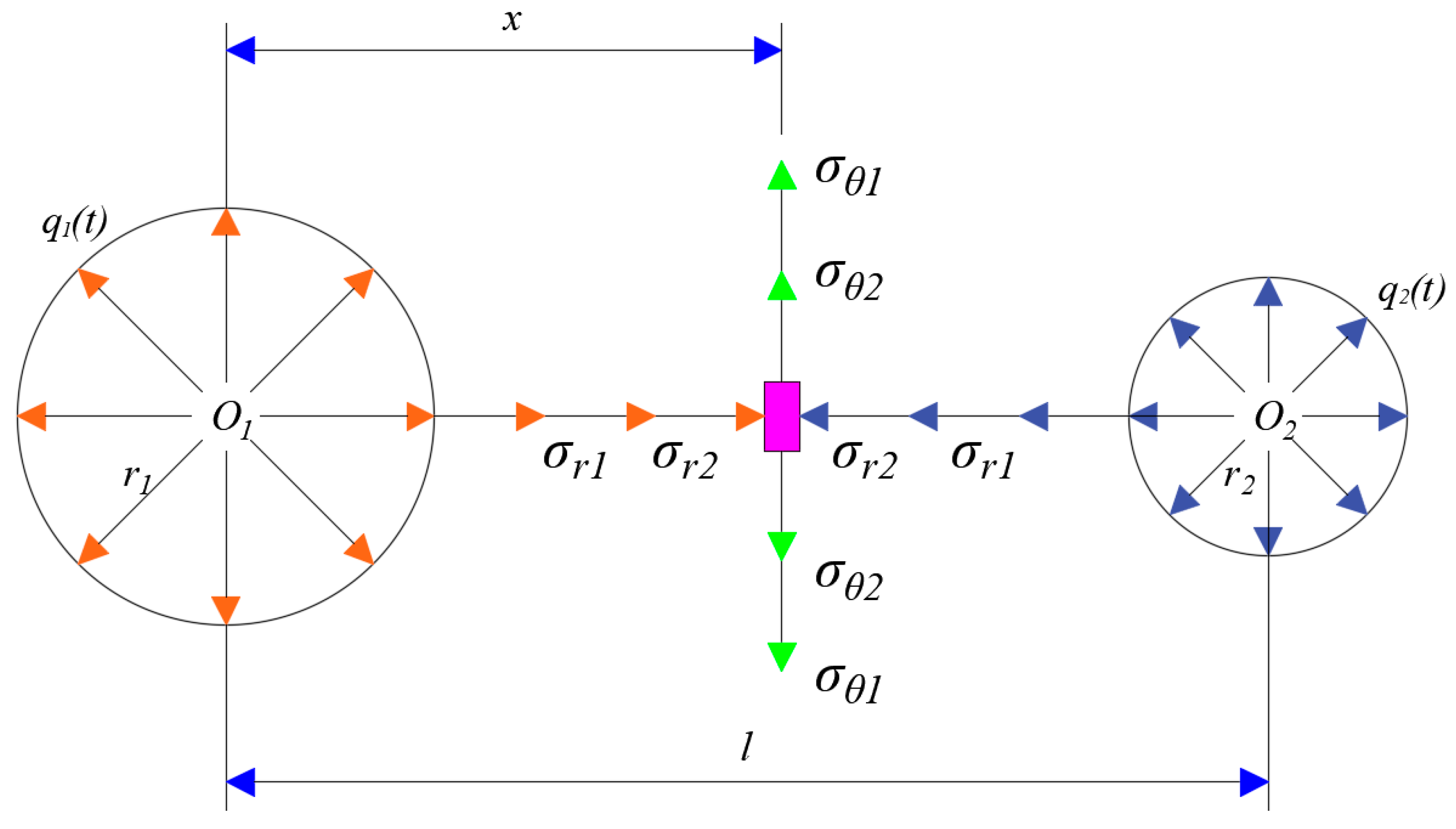
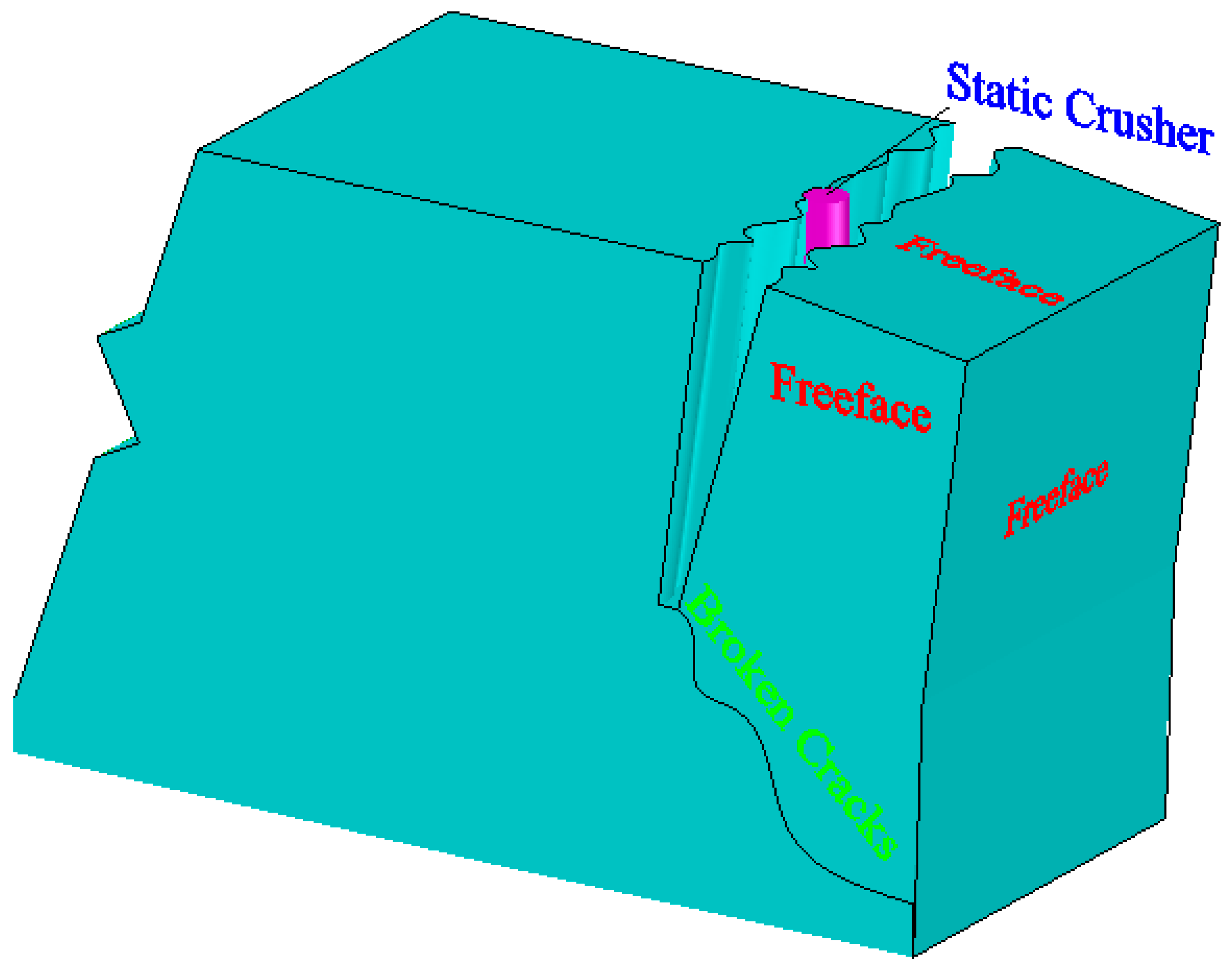



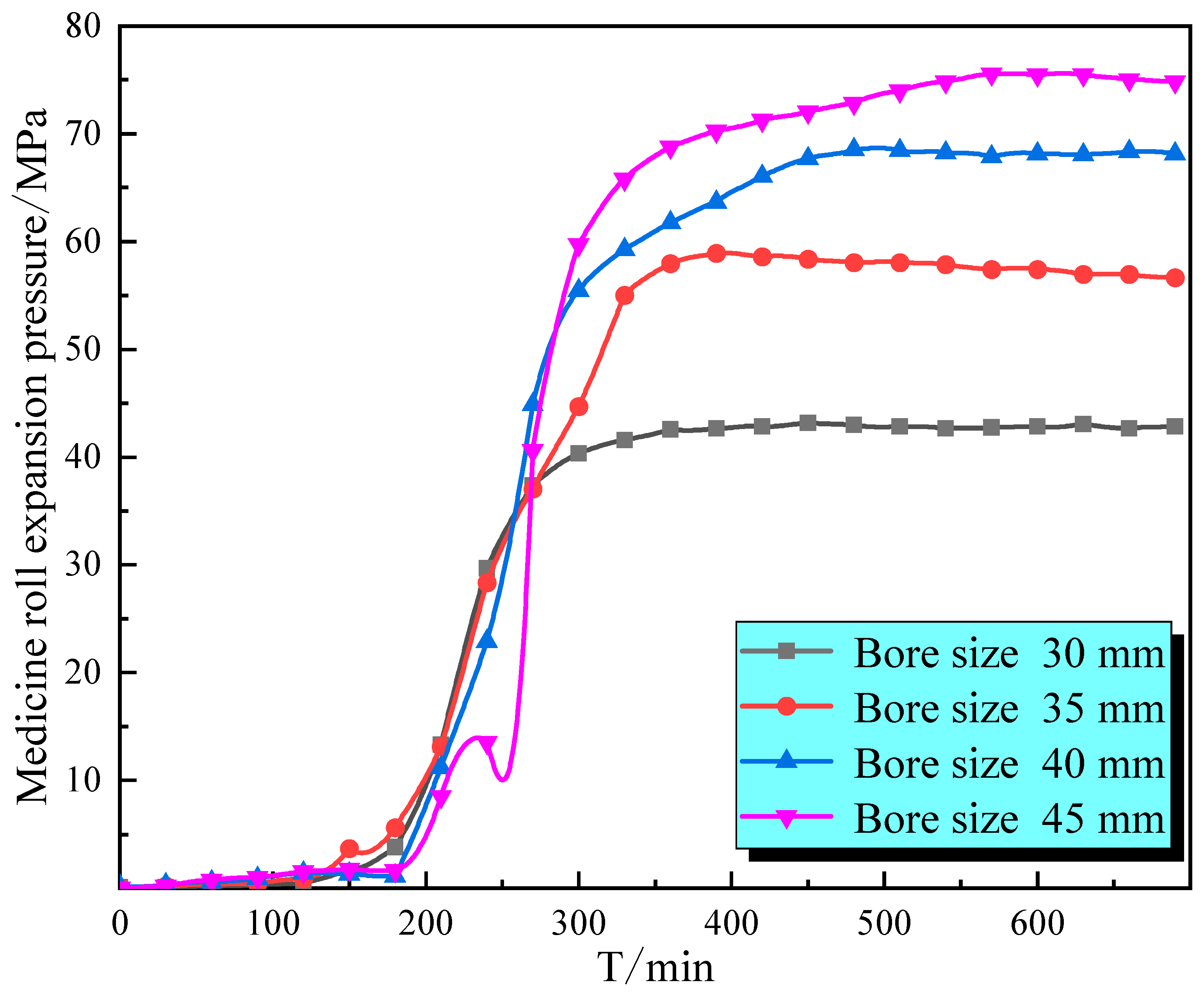

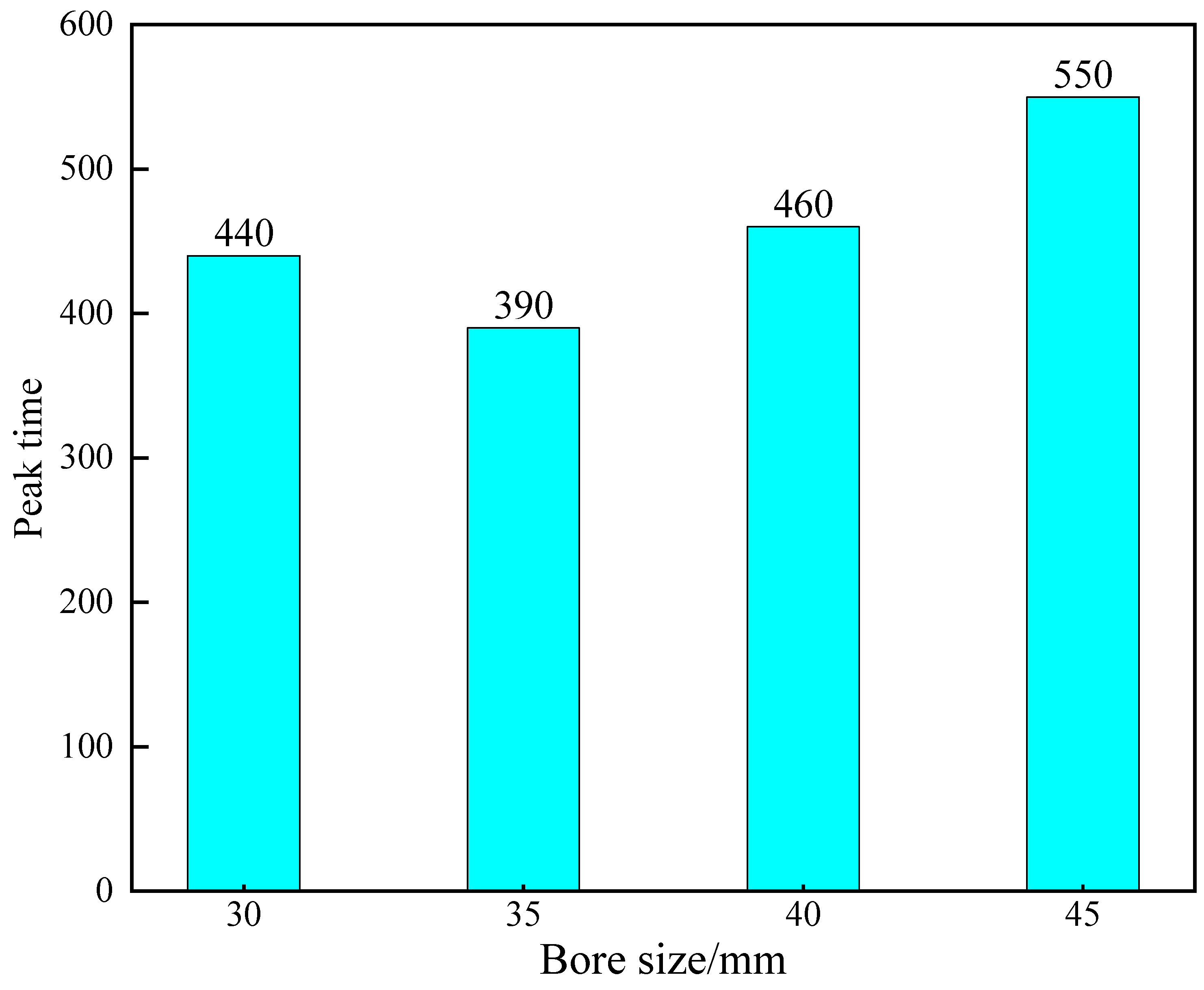

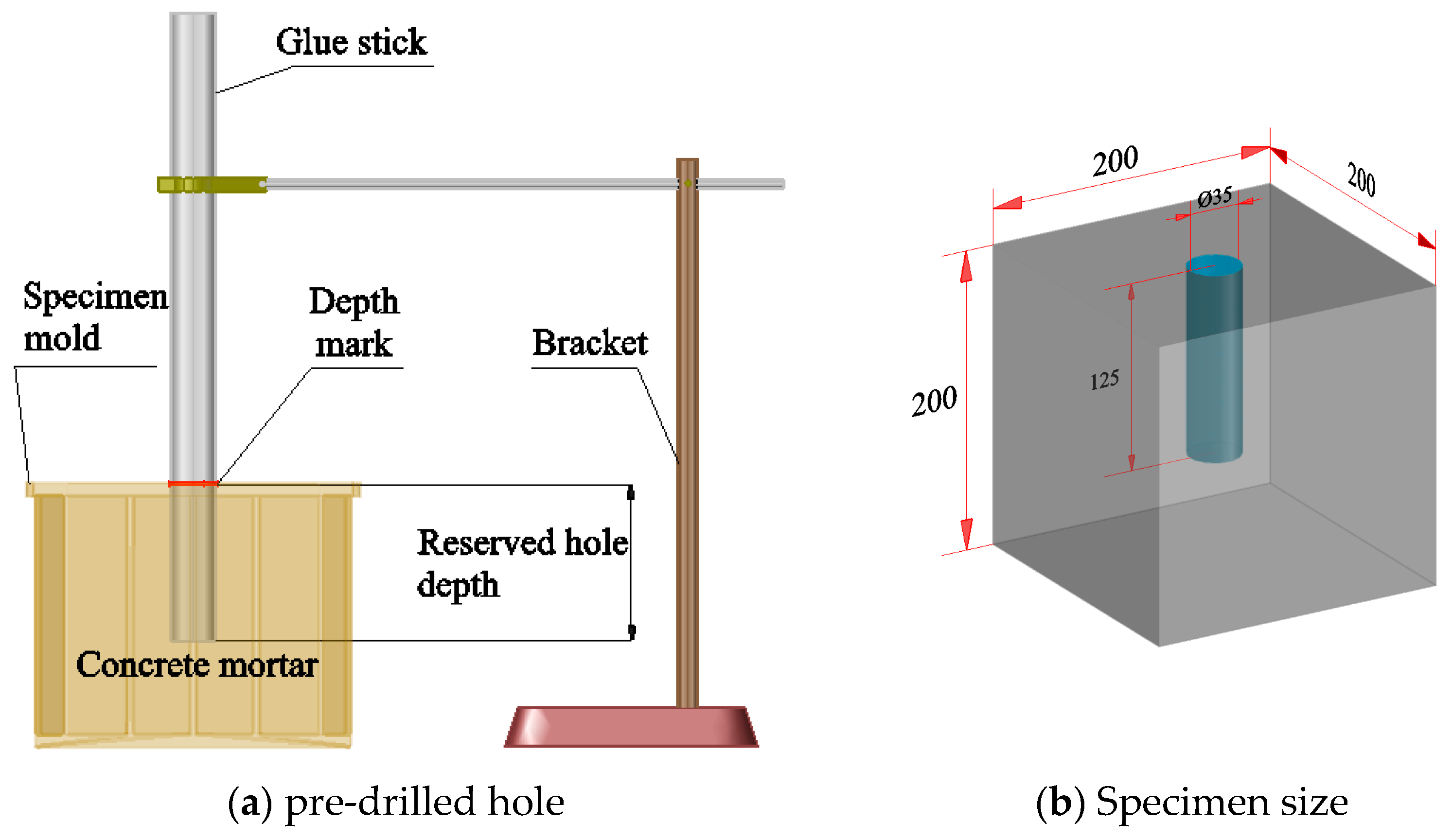



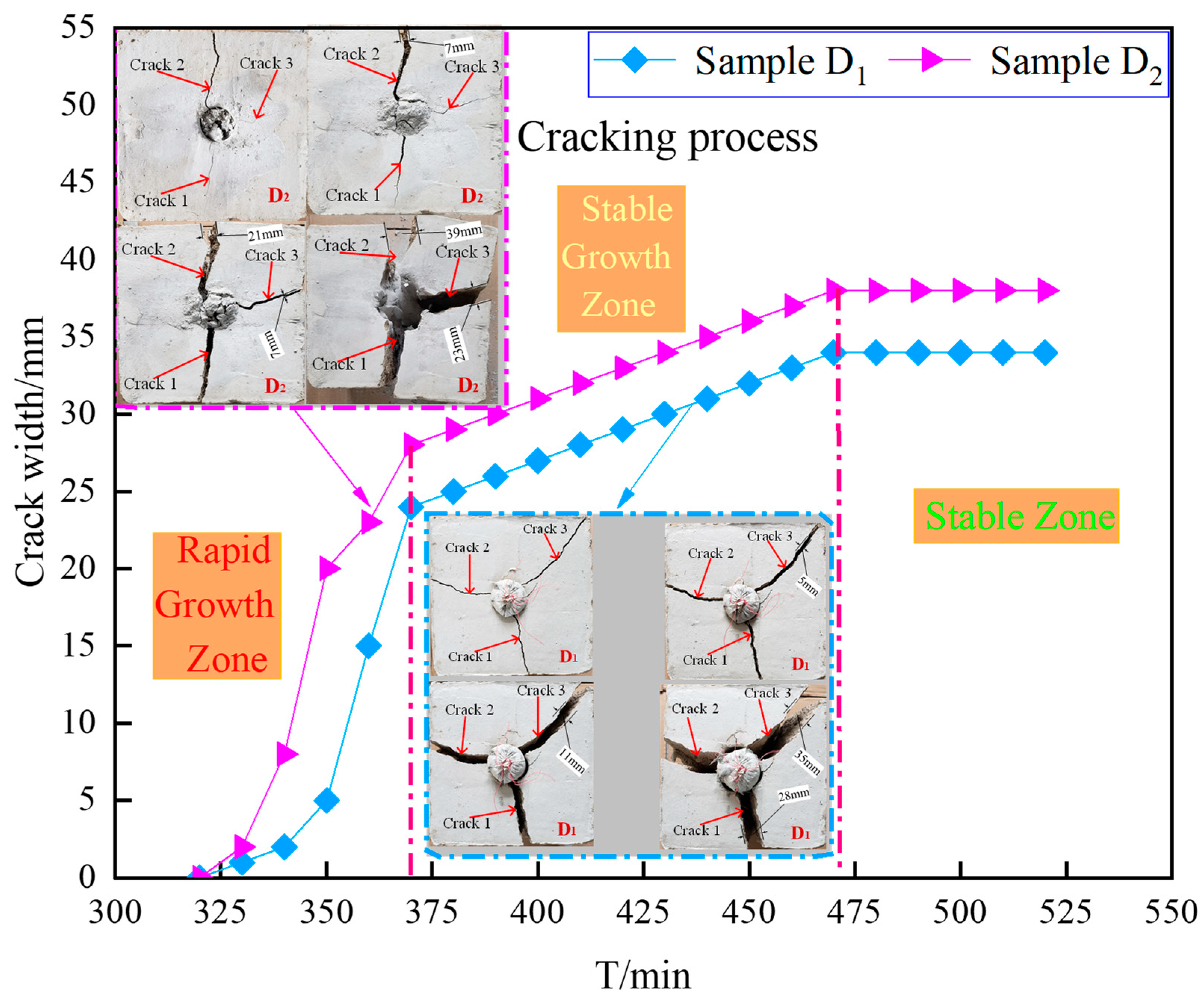
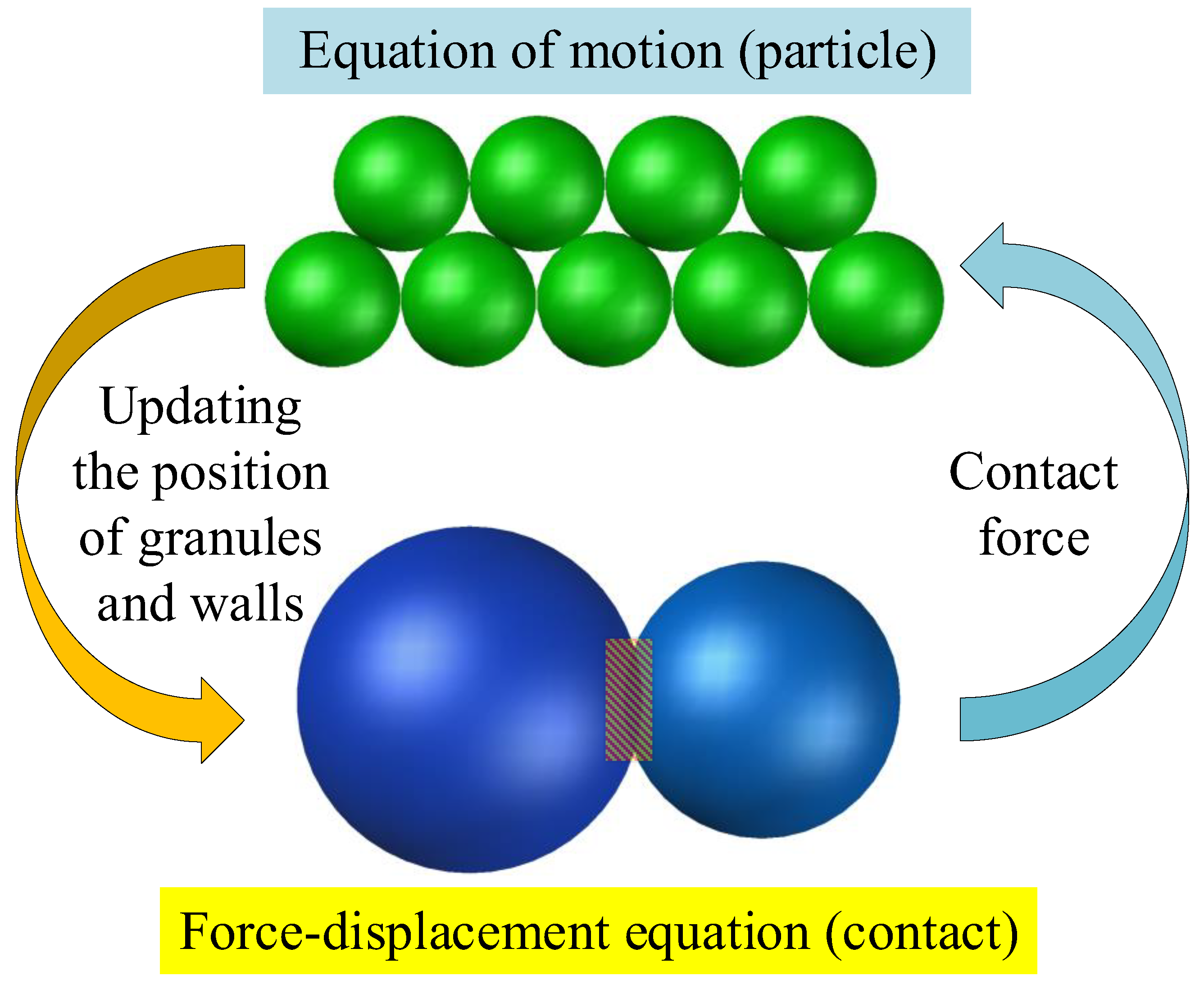


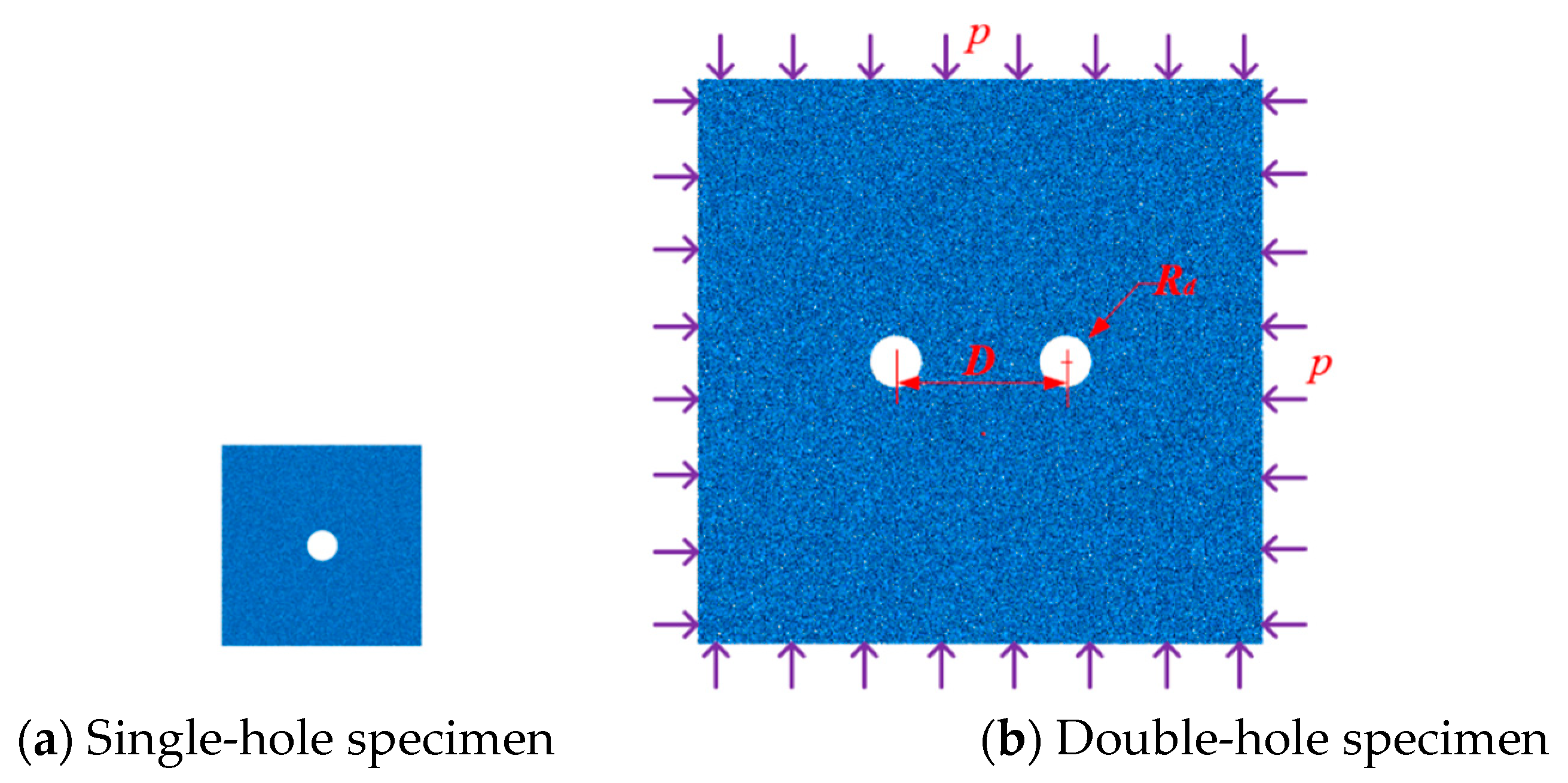
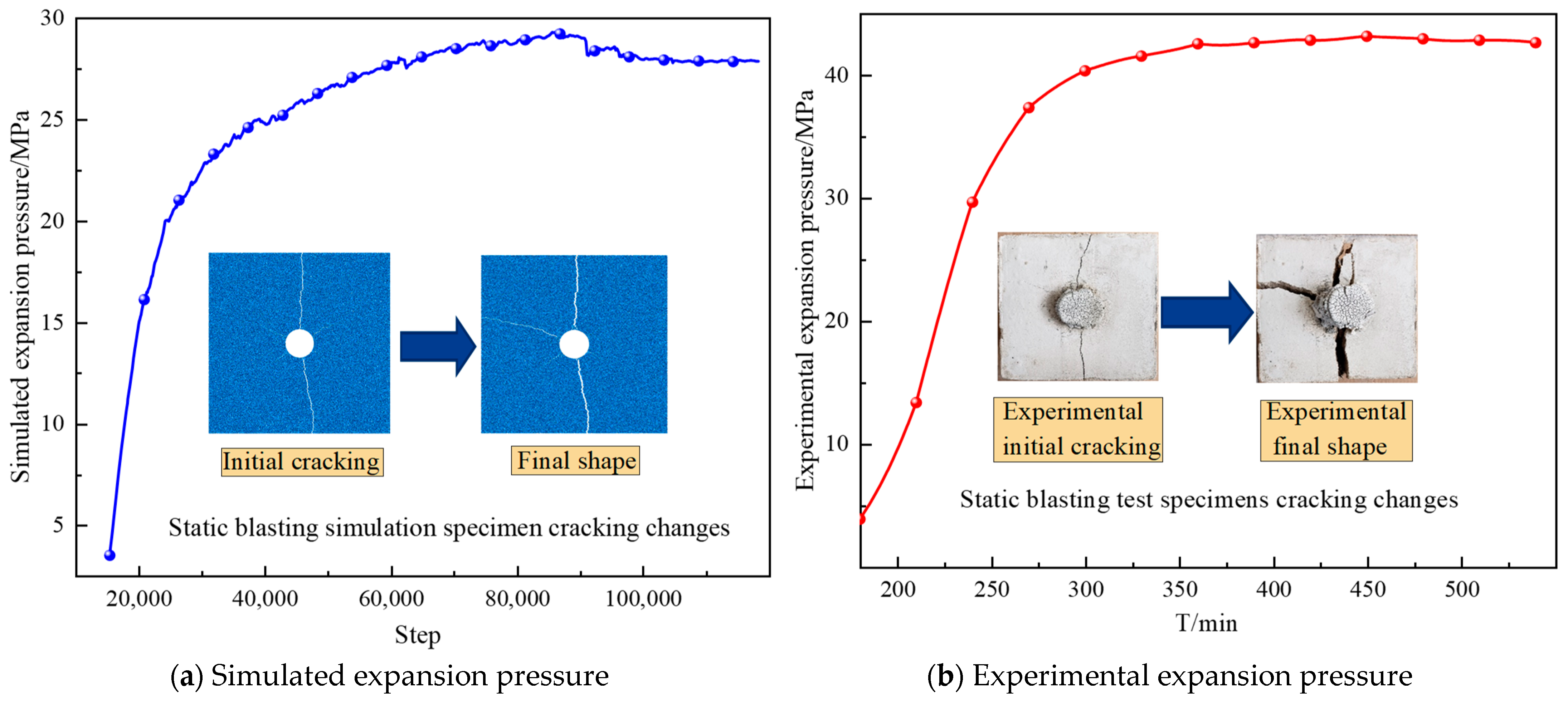



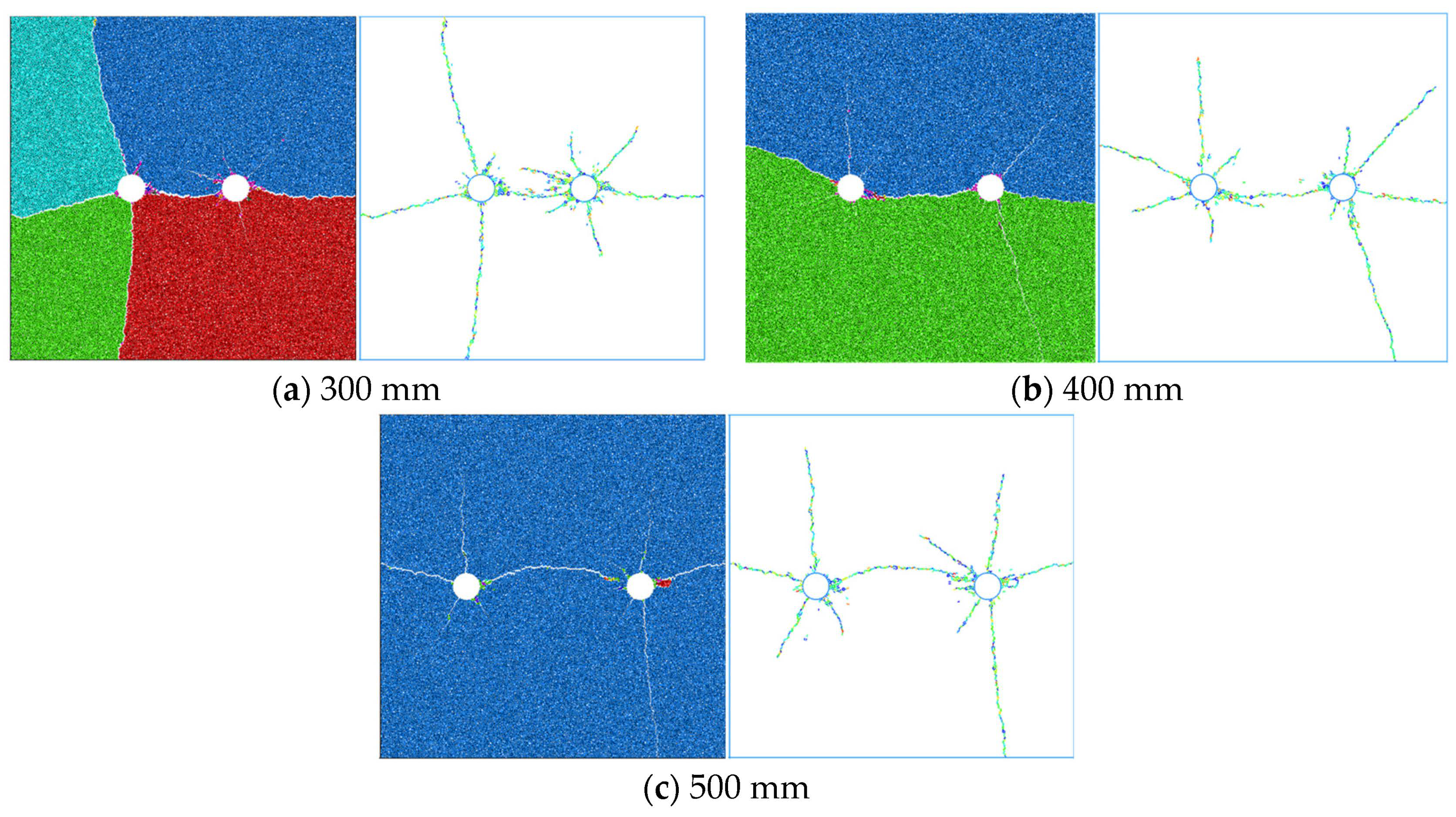
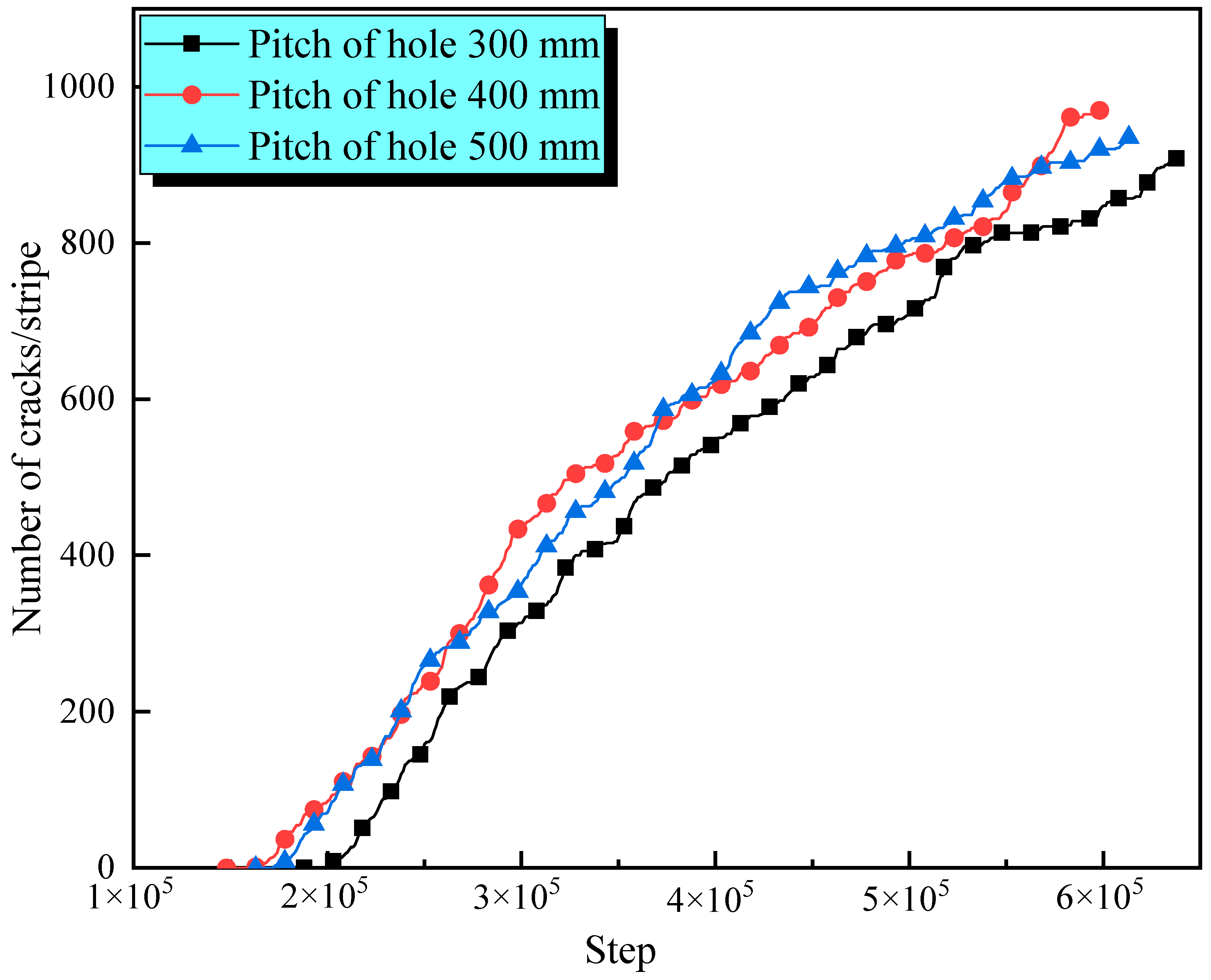
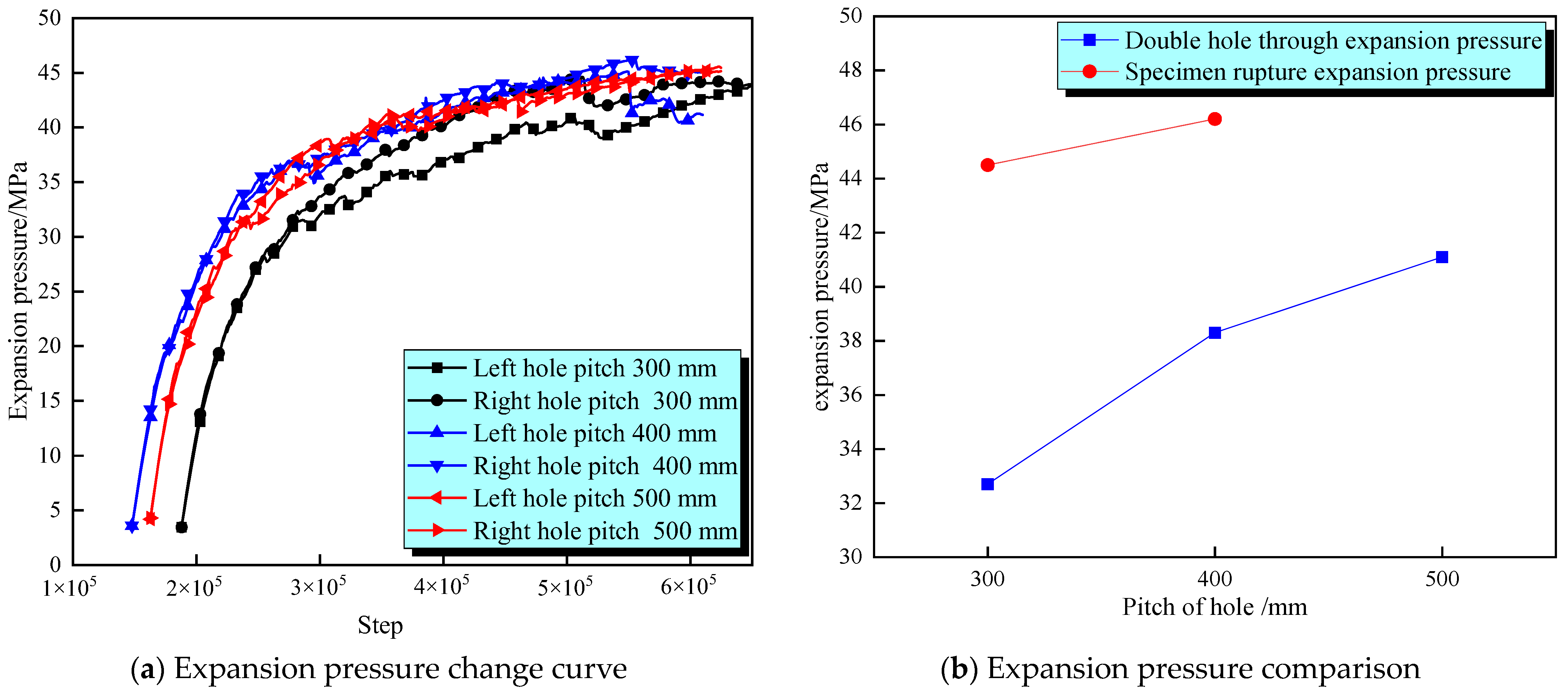

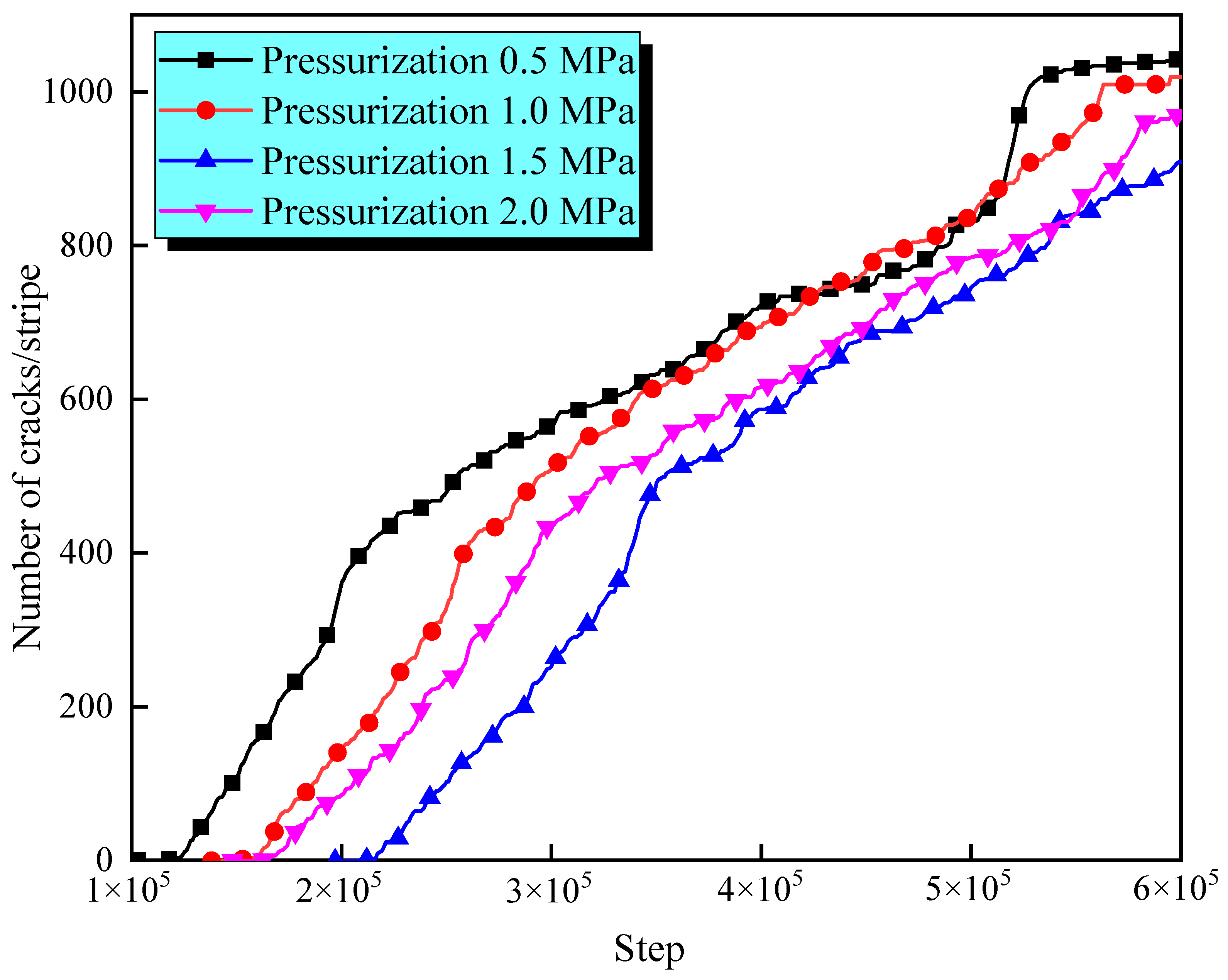

| Number | SCA | Length (mm) | Internal Diameter (mm) | Outer Diameter (mm) | Thicknesses (mm) |
|---|---|---|---|---|---|
| H1 | Herbal medicine roll | 500 | 30 | 38 | 4 |
| H2 | 35 | 43 | |||
| H3 | 40 | 48 | |||
| H4 | 45 | 53 |
| Cement Mortar Strength Grade | Mass of Material Consumed per 1 m³/kg | Mass Ratio | Mass of Water Used per 1 m³/kg | ||
|---|---|---|---|---|---|
| Cement | Sand | Cement | Sand | ||
| 32.5 | River Sand | 32.5 | River Sand | ||
| M15 | 400 | 1400 | 1 | 3.5 | 270~330 |
| M10 | 330 | 1400 | 1 | 4.2 | |
| M7.5 | 270 | 1400 | 1 | 5.2 | |
| M5.0 | 220 | 1400 | 1 | 6.4 | |
| Specimen Number | Compressive Strength (MPa) | Elastic Modulus (GPa) | Poisson’s Ratio | Tensile Strength (MPa) |
|---|---|---|---|---|
| 1 | 13.54 | 2.5 | 0.16 | 1.50 |
| 2 | 13.97 | 2.0 | 0.18 | 1.23 |
| 3 | 12.94 | 1.6 | 0.16 | 1.37 |
| Average value | 13.48 | 2.03 | 0.17 | 1.37 |
| Standard deviation | 0.732 | 0.638 | 0.017 | 0.191 |
| Specimen Number | Type of SCA | Time of Crack Initiation (min) | Number of Cracks | Range of Crack Width (mm) | Breakage Time (min) | Crack Surface Density (m−1) |
|---|---|---|---|---|---|---|
| D1 | Herbal medicine roll | 323 | 3 | 28~35 | 34 | 8.51 |
| D2 | 319 | 3 | 23~39 | 31 | 8.15 | |
| Standard deviation | 2.828 | 2.121 | 0.255 |
| Parallel Bond Normal Stiffness | Parallel Bonded Tangential Stiffness | Particle Friction Coefficient | Parallel Bond Normal Strength | Parallel Bond Tangential Strength | Particle Contact Modulus | Parallel Bonded Effective Modulus |
|---|---|---|---|---|---|---|
| Particle Size (mm) | Density (kg/m3) | Young’s Modulus (GPa) | Coefficient of Friction | Rigidity Ratio |
|---|---|---|---|---|
| 0.5~0.75 | 3500 | 1.0 | 0.577 | 1 |
| Experimental Program | Diameter of Hole (mm) | Pitch of Hole (mm) | Pressurization (MPa) | Maximum Expansion Pressure in the Hole (MPa) |
|---|---|---|---|---|
| Ⅰ | 30 | 400 | 2 | 43.5 |
| 35 | 58.8 | |||
| 40 | 69.5 | |||
| 45 | 75.1 | |||
| Ⅱ | 35 | 300 | 58.8 | |
| 400 | ||||
| 500 | ||||
| Ⅲ | 35 | 400 | 0.5 | |
| 1 | ||||
| 1.5 | ||||
| 2 |
Disclaimer/Publisher’s Note: The statements, opinions and data contained in all publications are solely those of the individual author(s) and contributor(s) and not of MDPI and/or the editor(s). MDPI and/or the editor(s) disclaim responsibility for any injury to people or property resulting from any ideas, methods, instructions or products referred to in the content. |
© 2023 by the authors. Licensee MDPI, Basel, Switzerland. This article is an open access article distributed under the terms and conditions of the Creative Commons Attribution (CC BY) license (https://creativecommons.org/licenses/by/4.0/).
Share and Cite
Xu, Z.; Cao, Y.; Li, C.; Tai, L.; He, S. Study on Mechanism of Static Blasting-Induced Hard Rock Fracture Expansion. Appl. Sci. 2023, 13, 11310. https://doi.org/10.3390/app132011310
Xu Z, Cao Y, Li C, Tai L, He S. Study on Mechanism of Static Blasting-Induced Hard Rock Fracture Expansion. Applied Sciences. 2023; 13(20):11310. https://doi.org/10.3390/app132011310
Chicago/Turabian StyleXu, Zhijun, Yue Cao, Chong Li, Lianhai Tai, and Sifeng He. 2023. "Study on Mechanism of Static Blasting-Induced Hard Rock Fracture Expansion" Applied Sciences 13, no. 20: 11310. https://doi.org/10.3390/app132011310





